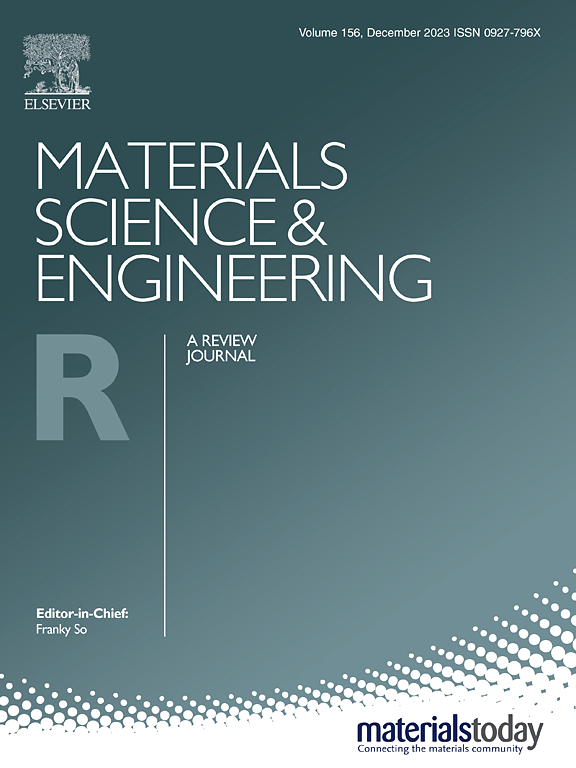Microfluidic synthesis of MOFs, COFs, and HOFs: Insights and advances
IF 31.6
1区 材料科学
Q1 MATERIALS SCIENCE, MULTIDISCIPLINARY
引用次数: 0
Abstract
Metal-Organic Frameworks (MOFs), Covalent Organic Frameworks (COFs), and Hydrogen-bonded Organic Frameworks (HOFs) (collectively MCHOFs) are increasingly recognized for their diverse applications in catalysis, drug delivery, separation, sensing, adsorption etc. However, their large-scale production using conventional methods faces significant challenges such as slow kinetics, insufficient control over reaction conditions, wide particle size distribution, and poor reproducibility. Microfluidic synthesis has emerged as a promising and greener solution, offering precise control over reaction conditions and product properties with high reproducibility, while significantly reducing waste generation and cutting synthesis time to minutes. Consequently, it has established itself as one of the most promising and sustainable approaches for industrial production of MCHOFs. This work provides a comprehensive overview of microfluidic synthesis of MCHOFs, covering key topics such as the fundamentals of microfluidics, materials for microfluidic fabrication, and microfluidic reactor configuration. It further covers chemistry underlying MCHOFs synthesis, conventional synthesis methods and their limitations, advances in MCHOFs synthesis enabled by microfluidics, synthesis variables, and techno-economic-environmental implications of microfluidic synthesis. Lastly, it identifies key gaps in the microfluidic synthesis of these materials, highlighting feasible future research directions to enhance the sustainability of microfluidic synthesis. By addressing these, it significantly contributes towards greener, efficient, and sustainable industrial-scale production of these materials.
mof, COFs和hof的微流控合成:见解和进展
金属有机骨架(MOFs)、共价有机骨架(COFs)和氢键有机骨架(HOFs)(统称MCHOFs)因其在催化、药物传递、分离、传感、吸附等方面的广泛应用而越来越受到人们的认可。然而,使用传统方法大规模生产它们面临着动力学慢、对反应条件控制不足、粒度分布宽、重现性差等重大挑战。微流控合成已经成为一种有前途的绿色解决方案,提供对反应条件和产品性能的精确控制,具有高重复性,同时显着减少废物产生并将合成时间缩短到几分钟。因此,它已成为最有前途和可持续的工业生产MCHOFs的方法之一。这项工作提供了微流控合成MCHOFs的全面概述,涵盖了微流控基础、微流控制造材料和微流控反应器配置等关键主题。它进一步涵盖了化学基础的MCHOFs合成,传统的合成方法及其局限性,微流控技术的MCHOFs合成进展,合成变量以及微流控合成的技术-经济-环境影响。最后,指出了这些材料的微流控合成中存在的关键空白,指出了未来可行的研究方向,以增强微流控合成的可持续性。通过解决这些问题,它为这些材料的绿色、高效和可持续的工业规模生产做出了重大贡献。
本文章由计算机程序翻译,如有差异,请以英文原文为准。
求助全文
约1分钟内获得全文
求助全文
来源期刊

Materials Science and Engineering: R: Reports
工程技术-材料科学:综合
CiteScore
60.50
自引率
0.30%
发文量
19
审稿时长
34 days
期刊介绍:
Materials Science & Engineering R: Reports is a journal that covers a wide range of topics in the field of materials science and engineering. It publishes both experimental and theoretical research papers, providing background information and critical assessments on various topics. The journal aims to publish high-quality and novel research papers and reviews.
The subject areas covered by the journal include Materials Science (General), Electronic Materials, Optical Materials, and Magnetic Materials. In addition to regular issues, the journal also publishes special issues on key themes in the field of materials science, including Energy Materials, Materials for Health, Materials Discovery, Innovation for High Value Manufacturing, and Sustainable Materials development.
 求助内容:
求助内容: 应助结果提醒方式:
应助结果提醒方式:


